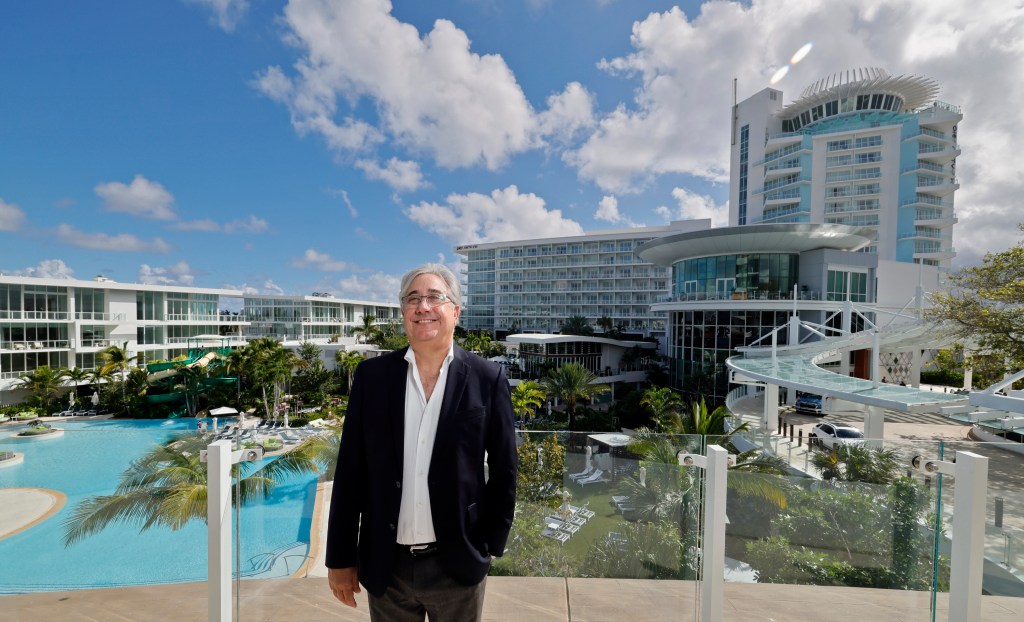Once again, the Fort Lauderdale’s Galleria Mall looms as a potential “community within a community,” where high-rise housing and nightspots combine with restaurants, retail and, yes, another hotel.
Objections about overcrowding and traffic gridlock are already stirring among local politicians and residents who rejected prior proposals.
But at a recent Fort Lauderdale conference of developers, urban planning and real estate professionals, it was easy for any observer to conclude that momentum toward fitting vast village-like communities into Broward County’s largest city is no vague forecast — it is a front-and-center ambition.
Besides the newly proposed Galleria with its nine 30-story towers, a 170-room hotel and a continued retail-restaurant presence, a number of others were on parade at a Urban Land Institute Southeast Florida / Caribbean gathering held in conjunction with the city’s Downtown Development Authority, which launched a marketing campaign dubbed “Fueled by Water.”
“This is a story of a city where water is not just our backdrop, it’s our energy, our brand and our competitive edge,” Stephanie Toothaker, a Fort Lauderdale land-use attorney, DDA vice chair and chief conference moderator told an audience of several hundred people.
“The numbers speak for themselves. Downtown Fort Lauderdale drives a $43 billion economy — the county’s undisputed powerhouse,” she said. “More than $12 billion in waterfront development is redefining our skyline.”
Among the projects showcased: the recently completed Phase I section of the Pier Sixty-Six Resort (the conference host), and the planned Bahia Mar remake by the beach supported by an ultra-luxury St. Regis Hotel.
Projects not a stone’s throw from the water but farther inland: the FAT Village mixed-use office and arts district project in the city’s Flagler Village section.
Not mentioned was the now-vacant Searstown lot at the corner of U.S. 1 and Sunrise Boulevard, where the Denver-based developer Aimco has designs for a complex of residential towers and hotel and retail operations.
Asked if the vast projects might bring competitive pressures against the downtown, Jenni Morejon, the DDA president and CEO, said she viewed them more as complements than rivals.
Although Miami-Dade and Palm Beach counties have drawn bigger names and larger numbers of firms relocating from the Northeast and elsewhere, Fort Lauderdale has leveraged its beachfront location and 165 miles of waterways to attract a meaningful share of businesses in finance, technology, life sciences, aviation and the city’s longtime staple, the maritime industry.
“What’s really the economic goal here or what has helped distinguish Fort Lauderdale is the density of workers able to walk to their jobs, spend money in local businesses and local restaurants, and the beach, which is the X factor,” John Boyd, president of the relocation consultancy The Boyd Company in Boca Raton, told the South Florida Sun Sentinel. “Every city in the country is trying to define itself as a live-work-play-destination. What distinguishes Fort Lauderdale is the beach.”
The arrivals of new residents are not only permanent, but seasonal, a fact not lost on Chris Gandolfo, senior vice president of Tavistock Development Company.
A veteran of major Miami developments such as the Brickell City Centre, Gandolfo spent the better part of the last decade reshaping the iconic Pier Sixty-Six site on the east bank of the Intracoastal Waterway into an enclave community of condos, an expanded hotel, offices, retail and a 164-slip marina that is annually turned over to the Fort Lauderdale International Boat Show to host superyachts.
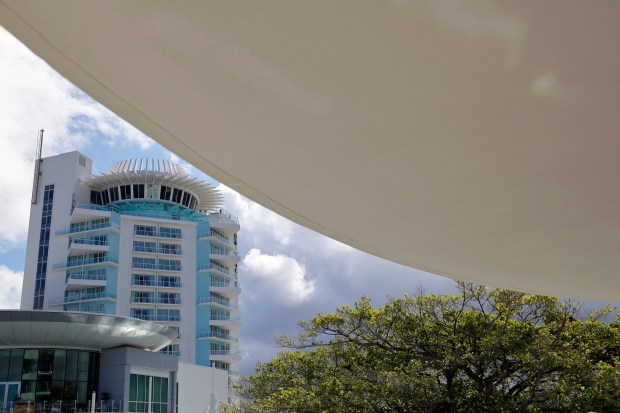 The iconic 17-story Pier Sixty-Six in Fort Lauderdale is shown as the newly redeveloped resort community gears up for the Fort Lauderdale International Boat Show and would-be buyers of its new luxury condominiums. (Amy Beth Bennett / South Florida Sun Sentinel)
The iconic 17-story Pier Sixty-Six in Fort Lauderdale is shown as the newly redeveloped resort community gears up for the Fort Lauderdale International Boat Show and would-be buyers of its new luxury condominiums. (Amy Beth Bennett / South Florida Sun Sentinel)
Pier Sixty-Six
“This property is one of the original iconic properties,” Gandolfo told the Sun Sentinel. It was money from an Oklahoma oil man that started the evolution, and a Phillips Petroleum CEO who saw the hospitality possibilities beyond the business of fueling boats.
“This property now is more of a lifestyle than just a typical condominium and resort,” Gandolfo said of the resort, which now boasts a hotel anchored by its landmark 230-foot tower building, 40,000 square feet of ballroom space, condos, office and retail space, restaurants and a 164-slip marina.
He sees a trend for other community styled developments in town — provided developers are given the flexibility to identify and respond to local market tastes and demand.
“That’s why you see these pockets of development now,” he said.
There will be a second phase, Gadolfo told the audience at the ULI conference.
“We’ve had early discussions with some commissioners that more is coming,” he said. “We are planning a Pier Sixty-Six that will go to the west and to the south where the super yacht village is. Then we’ll bring it like we did in the past. Everybody will have input into it.”
Bahia Mar
The five-star resort and four luxury condo towers will rise on city-owned Bahia Mar, home of the Fort Lauderdale International Boat Show. A sales campaign has been launched just ahead of the Oct. 29-Nov. 2 event. Unit prices have an extended range from $3 million to $25 million.
Jimmy Tate, whose company owns a 100-year lease with the city on Bahia Mar, is teaming to build the project with the Miami-based Related Group — which itself has migrated north to construct multiple high-rise condo and apartment projects in Fort Lauderdale and Pompano Beach.
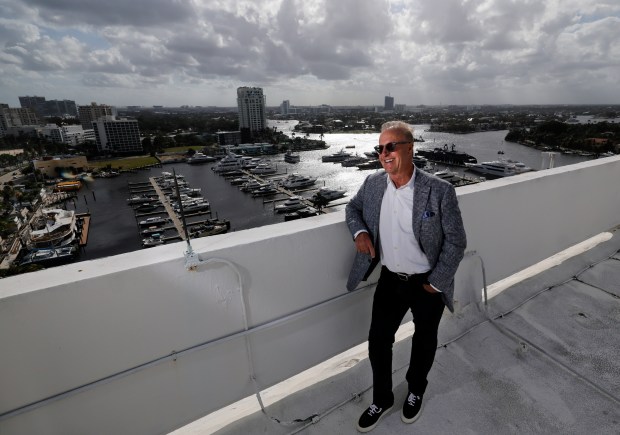 After some hard community battles, developer Jimmy Tate and his firm won over the city and a variety of critics to support a $2 billion remake of the Bahia Mar enclave between the Intracoastal Waterway and Atlantic Ocean. (Amy Beth Bennett / South Florida Sun Sentinel file)
After some hard community battles, developer Jimmy Tate and his firm won over the city and a variety of critics to support a $2 billion remake of the Bahia Mar enclave between the Intracoastal Waterway and Atlantic Ocean. (Amy Beth Bennett / South Florida Sun Sentinel file)
The St. Regis-branded hotel and two condo towers, part of the first phase, are expected to break ground in the summer of 2026.
“We always knew there was a cavas to be painted and a story to be told,” he said at the ULI conference.
“We have seen a remarkable amount of qualified buyers come through the doors,” he said. “I think our sales are phenomenal and we are looking forward to this year’s boat show.”
During the approval phase, the proposal took its own pounding from local objectors who fear traffic gridlock, obstructed views, more population density and a leasing deal that they believe fell short of what the city deserves.
But Tate told the audience his group has “a sense of responsibility because the property is owned by the city.”
He said trust funds from sales proceeds will be devoted to programs for the homeless, workforce housing and STEM education for students.
“Nobody asked us for that,” he said. “We volunteered that.”
FAT Village
Tucked between Andrews Avenue and the Florida East Coast Railway tracks below Sistrunk Boulevard, the $500 million “FAT Village (Food, Art and Technology) is on the rise in the form of a timber-supported office building and other structures designed to house residences, retail and places for artists to do their work.
More than 600 apartments are allocated between two towers, one with 24 floors standing 270 feet high and the other with 13 floors standing 161 feet high.
A third 83-foot tower will have office space for young professionals among six floors. A fourth tower with 257 apartments and 25 floors would be the tallest tower at 305 feet.
As part of a second phase, the last tower could become a hotel or a second office tower, depending on market needs.
The apartment towers are expected to open by mid-2026, and the office tower, shops and restaurants toward the end of next year.
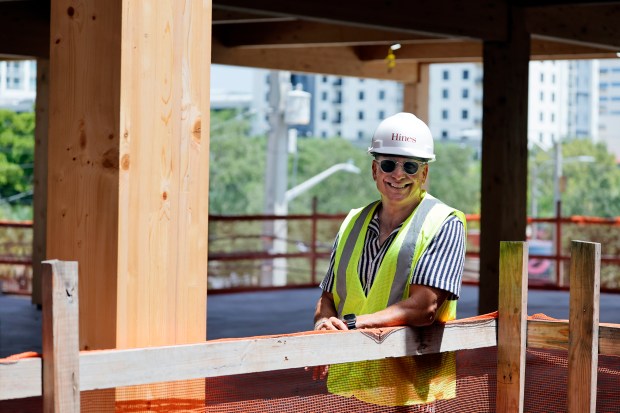 Developer Tim Petrillo (owner of YOLO, Boatyard and Casablanca Cafe) is shown at the FAT Village project in the Flagler Village neighborhood of Fort Lauderdale in July. The 5.5-acre site is bordered by Sistrunk Boulevard, Northwest Fifth Street, the Brightline train tracks, and Andrews Avenue. (Amy Beth Bennett / South Florida Sun Sentinel file)
Developer Tim Petrillo (owner of YOLO, Boatyard and Casablanca Cafe) is shown at the FAT Village project in the Flagler Village neighborhood of Fort Lauderdale in July. The 5.5-acre site is bordered by Sistrunk Boulevard, Northwest Fifth Street, the Brightline train tracks, and Andrews Avenue. (Amy Beth Bennett / South Florida Sun Sentinel file)
Restaurateur Tim Petrillo, co-founder of Urban Street Development and one of the project developers, said density is the key to keeping business flowing in any downtown.
“Density is very powerful because it allows people like restaurateurs like myself to take risks we’d never take,” he said.
“We have a Lebanese concept going in on Las Olas Boulevard that would have never happened 10 or 15 years ago,” Petrillo said. “The fact that we have a very diverse community of people means we can take risks like that.”
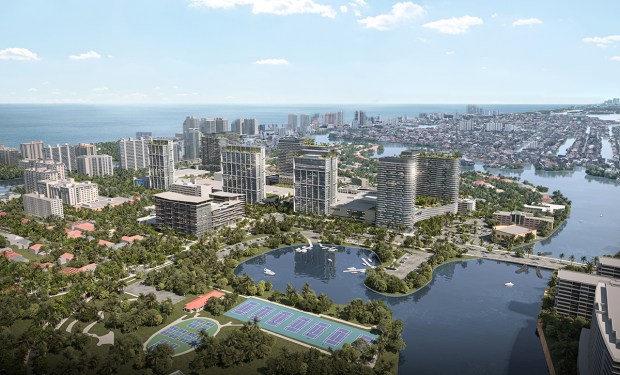 A rendering shows the proposed multi-tower redevelopment of the Galleria Mall area on East Sunrise Boulevard in Fort Lauderdale. (Architectonica/Courtesy)
A rendering shows the proposed multi-tower redevelopment of the Galleria Mall area on East Sunrise Boulevard in Fort Lauderdale. (Architectonica/Courtesy)
Galleria Mall
The broad-brush proposal for a collection of towers at the Galleria Mall took a number of people by surprise.
But Russell Galbut, the longtime developer from Miami Beach, told the ULI panel that a collection of residences that would contain a mix of income-earners from the medical, education and public-safety fields are keys to building a 24-hour community that provides people with the amenities they need.
He expects the project will unfold under the auspices of the state’s Live Local Act, which offers expedited approvals for those that make room for affordable housing.
“Affordability is something that is escaping South Florida,” he said. “It really builds a community.”
Galbut, 72, grew up in Miami Beach and recalled the days when his neighborhood was largely a community of police, firefighters and teachers. “I grew up with lots of friends who all knew each other’s names,” he said.
As for use of the Live Local Act, he suggested it is crucial for a city to adopt the process as it saves valuable time for developers seeking approvals.
“We believe that cities and communities that buy into it would ultimately do better,” Galbut said. “Those who fight it will do worse.”
But Fort Lauderdale Mayor Dean Trantalis told the South Florida Sun Sentinel last week that he’ll be asking neighborhood residents to raise questions about the project, which he asserted does not comport with the idea that residents who live there will spend most of their time there, thus taking traffic from the streets.
“Almost all of the new construction options are residential,” he said. “I have not seen any component that talks about significant office or commercial space. They say they want to keep the Gallieria (Mall) but that’s a retail space.”
Downtown offices
If there are to be new offices built anywhere, the proposition will be a tough one financially, Jay Caplin, principal of Square2 Capital, told the ULI conference. Caplin is part of a group that acquired the 23-story Bank of America building at 401 Las Olas Blvd.
He noted that it’s “hard if not impossible to build office right now” as “institutional investors have essentially said it is an uninvestable product.”
Caplin said his group’s aim is to bring alive the building’s unused common areas as an enticement for workers to return to their offices. Given investor reluctance to finance the construction of buildings, he sees an opportunity to invest in the placement of restaurants, fitness facilities and other amenities to keep workers in the building beyond the traditional 9-to-5 work day.
“We intend to move to compete effectively with The Main,” Caplin said, referring to The Main Las Olas, a mixed-use behemoth that contains Class A offices, upscale residences, restaurants and retail including a Publix market.
Look ahead
When asked about the case for investing in the city, Caplin pointed to the “village” enclaves which have generated a high “walkability” factor in the city.
“You’ve got Himmarshee Village, FAT Village, Flagler Village, the Village People,” he quipped. “You’ve got villages everywhere. But you’ve got a great synergy of what’s going on.
“While it may not have the same flash as Miami or West Palm Beach, these urban retail areas that have evolved really are on a par with what’s in Delray and Coral Gables and Wynwood,” Caplin said.
“And people want to be here,” he added, including suburban residents who are attracted to the city on weekends.
Originally Published: October 13, 2025 at 7:00 AM EDT

